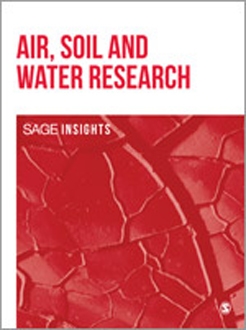Soil fumigants, such as 1,3-dichloropropene (1,3-D), are used on a variety of different crops in high use areas in the United States, including the Pacific Northwest, the mid-Atlantic coast, and the Southeast coastal plains. Contaminant concentrations in air are often required for environmental exposure and human risk assessment. The SOil Fumigant Exposure Assessment (SOFEA) model, originally developed to explore volatile pesticide exposure and bystander risk, has recently been upgraded using AERMOD, the US Environmental Protection Agency’s (EPA) recommended regulatory air dispersion model to predict short-, medium-, and long-term pesticide concentrations in air resulting from representative agronomic practices in large airsheds. Modeling air concentrations has several advantages over monitoring such as the ability to predict concentrations at multiple locations and airsheds at a much greater temporal frequency than could be practically accomplished through monitoring alone. The agricultural modeling tool presented herein was parameterized using 1,3-D application data (mass, date, and depth applied, location, etc) obtained from growers in each study area, and local weather data and hourly concentrations of 1,3-D in ambient air were simulated for large airsheds. The human equivalent concentrations (HECs) for acute, short-term, sub-chronic, and chronic exposure of 1,3-D were not exceeded in any of the study areas investigated. These simulated 1,3-D concentrations are used to assess human exposure and risk, which considers human-life-stage-specific exposure factors, including residential mobility, time-activity patterns, and age-specific inhalation rates and body weights.
How to translate text using browser tools
1 January 2020
Modeling 1,3-D Concentrations in Ambient Air in High Use Airsheds of the United States
Ian van Wesenbeeck,
S Cryer,
O deCirugeda Helle,
Z Yan,
J Driver

Air, Soil and Water Research
Vol. 12 • No. 1
January 2019
Vol. 12 • No. 1
January 2019
1,3-dichloropropene
Air dispersion model
ambient air
SOFEA





